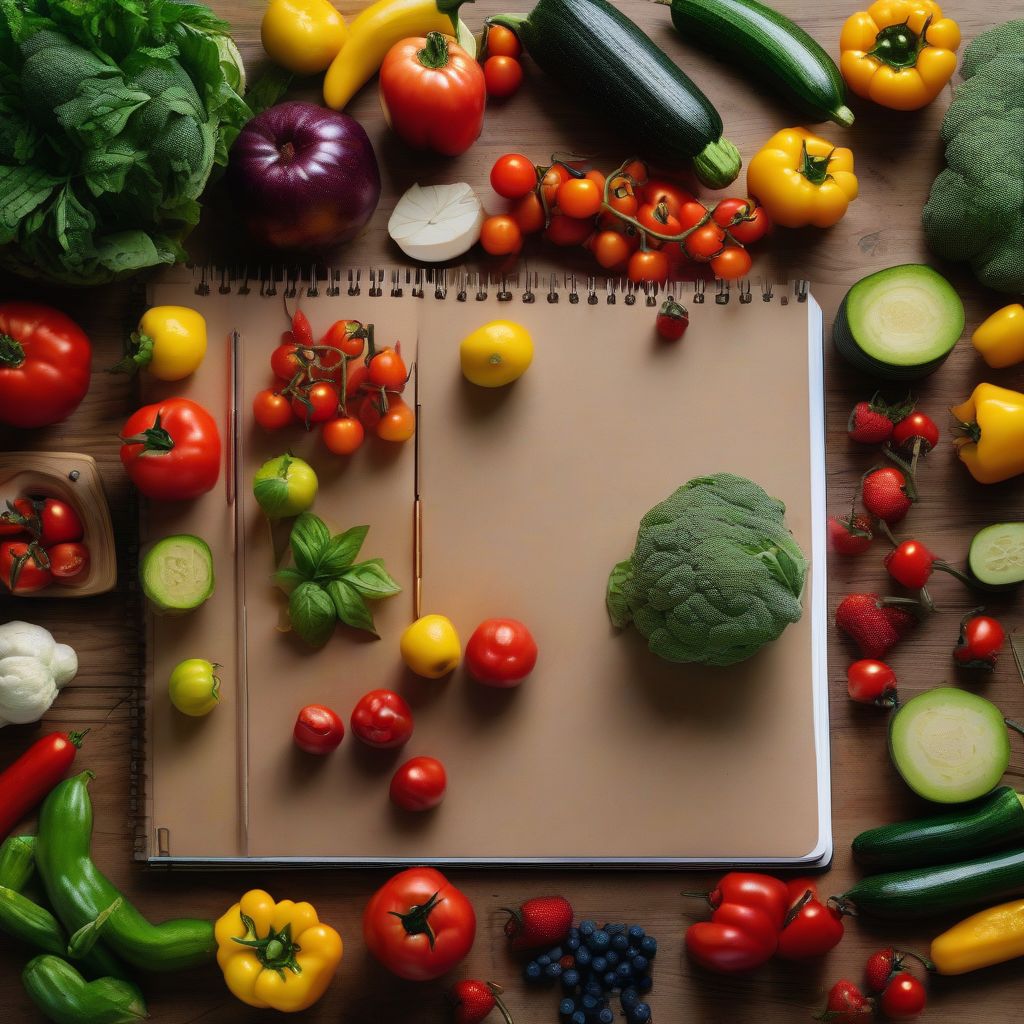Have you ever noticed how a perfectly ripe tomato in the summer tastes infinitely better than one you buy in the winter? That’s the magic of seasonal eating! Not only does eating seasonally taste better, it’s also better for your wallet, the environment, and your health. But how do you actually plan meals around what’s in season? Let’s dive in and discover the joys of seasonal eating and how to make it a delicious part of your life.
Why Eat Seasonally?
Before we get into the “how,” let’s talk about the “why.” Eating with the seasons offers a multitude of benefits:
Taste and Nutrition:
Fruits and vegetables picked at their peak ripeness are bursting with flavor and nutrients. They haven’t spent weeks traveling, so they retain more vitamins and minerals. Think about that sweet, juicy summer peach – pure sunshine in a bite!
Budget-Friendly:
Seasonal produce is often more affordable because it’s abundant and doesn’t require long-distance transportation. You’ll find great deals at farmers’ markets and grocery stores when produce is in its prime.
Environmental Benefits:
Choosing local and seasonal produce reduces your carbon footprint. Less transportation means fewer emissions and a lighter impact on the planet. Plus, supporting local farmers strengthens your community.
Variety and Excitement:
Eating seasonally naturally encourages you to try new things. Say goodbye to the same old meals and hello to a diverse and exciting array of flavors throughout the year. Asparagus in the spring, juicy berries in the summer, hearty root vegetables in the fall – every season brings a new culinary adventure.
How to Plan Your Seasonal Meals
Now that you’re convinced, let’s get practical. Here’s a step-by-step guide to planning meals around seasonal produce:
1. Know What’s in Season:
The first step is knowing what’s readily available in your area. Resources like the USDA’s Seasonal Produce Guide, local farmers’ market websites, and even a quick chat with your local farmers can provide valuable insights. Many grocery stores also highlight seasonal items.
2. Create a Seasonal Shopping List:
Once you know what’s in season, build a shopping list around these items. Focus on incorporating a variety of fruits and vegetables to ensure you’re getting a range of nutrients.
3. Plan Your Meals:
With your seasonal shopping list in hand, start planning your meals for the week. Look up recipes that feature your chosen produce or get creative and come up with your own combinations. Think about incorporating seasonal ingredients into breakfast, lunch, dinner, and even snacks.
4. Prep Ingredients:
Once you’ve done your shopping, prep ingredients ahead of time to make cooking easier during the week. Wash and chop vegetables, cook grains, and marinate proteins to save valuable time later.
5. Embrace Flexibility:
While planning is essential, be flexible. If you find a great deal on a different seasonal item at the market, don’t be afraid to adjust your meal plan. Seasonal eating is about embracing the abundance of nature, so go with the flow!
Tips for Seasonal Meal Planning Success
- Start small: Don’t feel pressured to overhaul your entire diet overnight. Start by incorporating one or two seasonal meals into your week and gradually increase from there.
- Preserve the bounty: When you have an abundance of seasonal produce, consider preserving it for later. Freezing, canning, or pickling are great ways to enjoy the flavors of the season year-round. Imagine homemade strawberry jam in the middle of winter – a little taste of summer sunshine!
- Join a CSA: Community Supported Agriculture (CSA) programs are a fantastic way to get fresh, local, and seasonal produce delivered right to your doorstep.
- Explore farmers’ markets: Farmers’ markets are a treasure trove of seasonal goodies. Chat with the farmers, learn about their growing practices, and discover new varieties of fruits and vegetables you might never have tried before.
- Don’t be afraid to experiment: Seasonal cooking encourages culinary creativity. Try new recipes, experiment with different flavor combinations, and don’t be afraid to make mistakes.
 Seasonal Meal Planning
Seasonal Meal Planning
Conclusion
Eating seasonally is a delicious and rewarding way to nourish your body, support local farmers, and connect with the natural rhythms of the earth. By following these simple steps and embracing the abundance of each season, you can create delicious and nutritious meals that are good for you, your wallet, and the planet. So, what are you waiting for? Head to your local farmers’ market and start exploring the wonderful world of seasonal eating! Share your favorite seasonal recipes and tips in the comments below!



